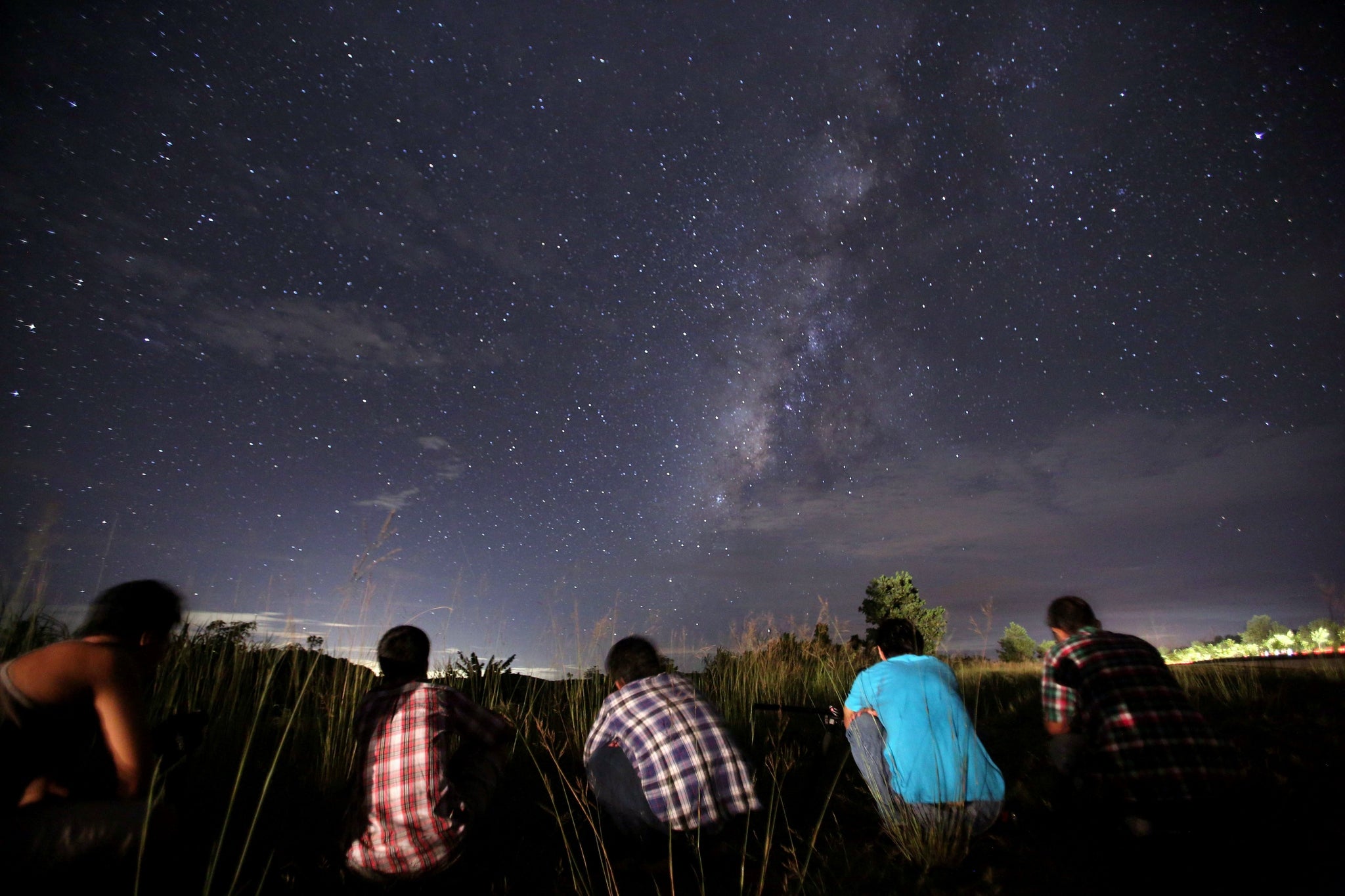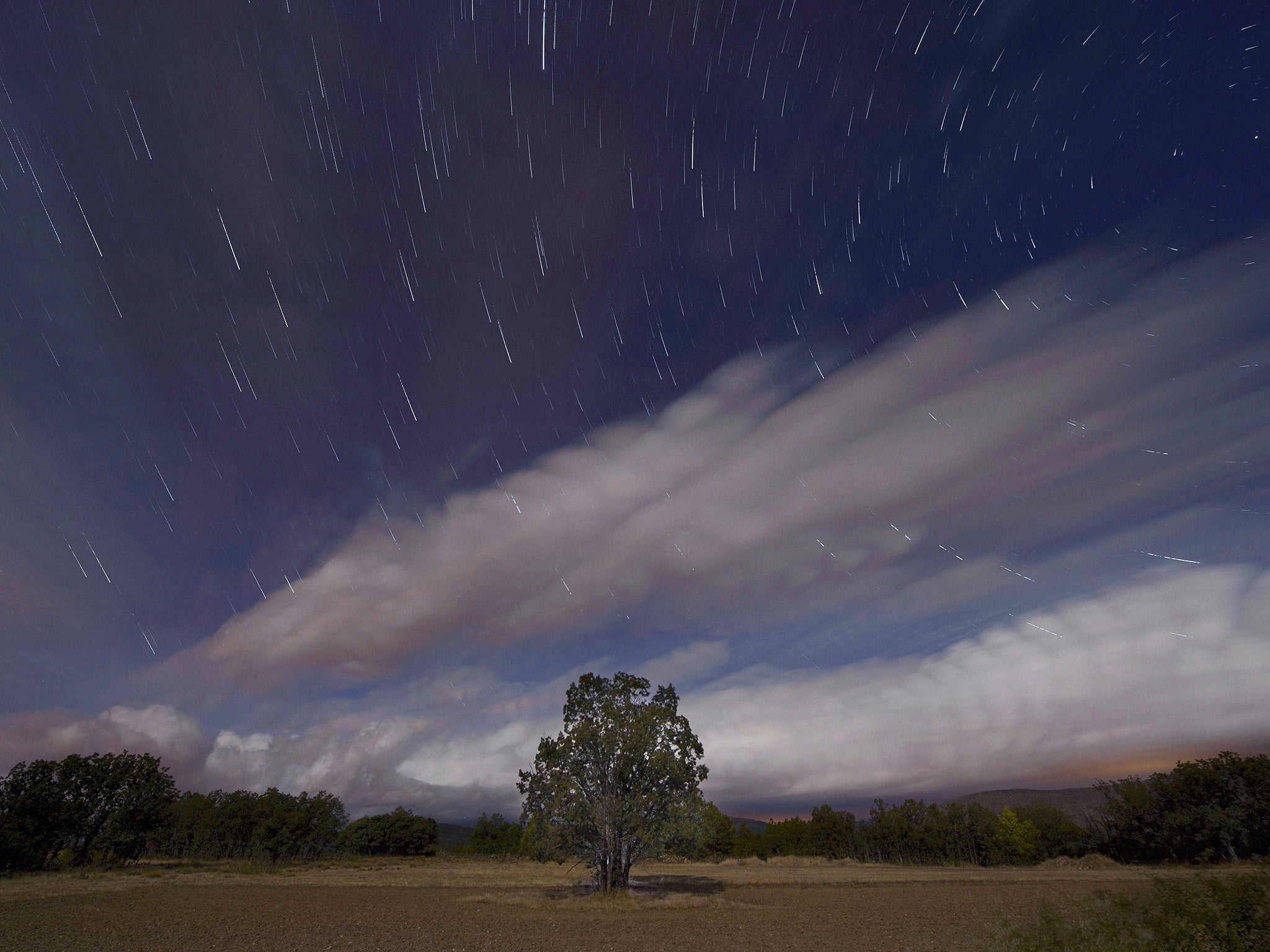Perseid meteor shower: moon and International Space Station line up to make yearly show even more beautiful
The moon will get out of the way — and the ISS is set to join in

Your support helps us to tell the story
From reproductive rights to climate change to Big Tech, The Independent is on the ground when the story is developing. Whether it's investigating the financials of Elon Musk's pro-Trump PAC or producing our latest documentary, 'The A Word', which shines a light on the American women fighting for reproductive rights, we know how important it is to parse out the facts from the messaging.
At such a critical moment in US history, we need reporters on the ground. Your donation allows us to keep sending journalists to speak to both sides of the story.
The Independent is trusted by Americans across the entire political spectrum. And unlike many other quality news outlets, we choose not to lock Americans out of our reporting and analysis with paywalls. We believe quality journalism should be available to everyone, paid for by those who can afford it.
Your support makes all the difference.The moon and the International Space Station are lining up to make this year’s Perseids meteor shower even more stunning than usual.
The moon is planning to get out of the way, since it will be in its new phase and at its darkest. That will let people see yet more of the lights as they rain across the sky.
And those lights will be helped out by a man-made one: the International Space Station, which will fly over the UK at about 10.30pm on Wednesday, just when the show is at its brightest.
Robin Scagell, vice-president of the Society for Popular Astronomy, said: "The thing about shooting stars is they're a wonderful free spectacle we can all enjoy, assuming clear skies.
"Its best to watch them from the countryside but even in town, these meteors are bright enough for a few to be visible.
"The moon is out of the way which makes a lot of difference because the sky will be much darker all night. For every bright shooting star you see there are always fainter ones, and this will make it easier to see the fainter meteors and ring up the numbers.
"The Perseids are usually fairly bright. Also, they tend to leave a trail, or train, behind them. You can see the train hanging there glowing in the sky for a few seconds - sometimes for several minutes - after the meteor has gone."
He urged people to keep a special eye out for the International Space Station, which can be seen passing over the UK at around 10.30pm on Wednesday.

"It will move from the west below the bright star Arcturus and then move towards the south, fading out as it passes into the Earth's shadow at 10.32pm," said Mr Scagell. "And it will be the brightest thing in the sky, apart from aircraft. It'll be in mid sky from southern England and quite low in the sky from northern Scotland but still visible."
Meteors are the result of particles as small as a grain of sand entering the Earth's atmosphere at high speed and burning up.
They can appear anywhere but seem to emerge from a single point, or "radiant". The Perseid's radiant is in the north-east constellation of Perseus.
Additional reporting by Press Association
Join our commenting forum
Join thought-provoking conversations, follow other Independent readers and see their replies
Comments